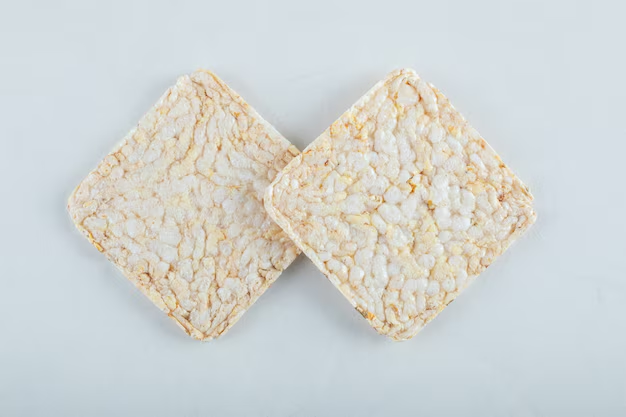Sea turtles are some of the most fascinating creatures of the ocean, known for their long migrations and important role in marine ecosystems. One of the questions that often arises is whether sea turtles feed on algae found around coral reefs. This article will explore the relationship between sea turtles and coral reefs, shedding light on their feeding habits, the types of algae they consume, and the broader ecological impact.
Understanding Sea Turtles and Their Diet
What Do Sea Turtles Eat?
Sea turtles are opportunistic feeders, meaning their diet is varied and depends largely on their species, habitat, and the available food sources. Sea turtles primarily feed on marine plants, invertebrates, and sometimes small fish. The main types of sea turtles that inhabit coral reefs include the Green Sea Turtle, Hawksbill Turtle, and Loggerhead Turtle, each with slightly different feeding preferences.
The Importance of Algae in the Ocean Ecosystem
Algae plays a critical role in marine ecosystems, especially around coral reefs. Algae is a primary producer, converting sunlight into energy through photosynthesis, and serves as a foundational food source for many marine animals. Coral reefs, often referred to as the “rainforests of the sea,” are rich in biodiversity, with algae being a key component in the diet of many reef inhabitants.
Sea Turtles and Coral Reefs: A Symbiotic Relationship
The Role of Coral Reefs in the Sea Turtle’s Life
Coral reefs provide essential shelter, breeding grounds, and food sources for a wide variety of marine species, including sea turtles. These ecosystems are home to various invertebrates and fish species, which make up a significant part of the sea turtle’s diet. The reefs also support a variety of algae, which some species of sea turtles feed on.
Green sea turtles, in particular, are known to graze on seagrasses and algae in shallow reef areas. The abundance of algae around coral reefs provides an important food source for these turtles, especially during the juvenile stages when they require more energy for growth.
Sea Turtles’ Feeding Habits in Coral Reef Ecosystems
Some species of sea turtles, especially the Green Sea Turtle (Chelonia mydas), are known to graze on algae that grow on coral reefs. These algae are an essential part of their diet, and they help maintain the balance of the reef ecosystem by controlling algal overgrowth. By feeding on algae, sea turtles help prevent algae from smothering corals, which could otherwise lead to the degradation of the reef.
Green Sea Turtles and Algae
Green sea turtles are primarily herbivores and are particularly fond of algae. They are often observed grazing on the various types of algae that grow on the surfaces of coral reefs, such as macroalgae, green algae, and red algae. The algae provide them with essential nutrients, including carbohydrates, proteins, and other vital minerals.
Green turtles are also known to feed on seagrass, which is often found in association with coral reef areas. This dual diet of seagrasses and algae is crucial for their survival, especially in areas where food sources may be scarce.
Hawksbill Turtles and Sponges: A Different Diet
While green sea turtles predominantly feed on algae, Hawksbill turtles (Eretmochelys imbricata) have a slightly different diet. These turtles are more often seen feeding on sponges that grow on coral reefs rather than algae. However, their diet can also include some algae, particularly in regions where sponges are less abundant.
The feeding behavior of Hawksbill turtles plays an important role in controlling sponge populations around coral reefs. By keeping the sponge population in check, these turtles help maintain the delicate balance of the reef ecosystem.
Types of Algae Found Around Coral Reefs
Macroalgae: A Primary Food Source for Sea Turtles
Macroalgae, also known as seaweeds, are large, multicellular algae found in shallow coastal waters, particularly in the regions surrounding coral reefs. These algae are a major food source for many herbivorous marine species, including green sea turtles. Types of macroalgae commonly found around coral reefs include:
- Green Algae: This type of algae is commonly found on coral reefs and is a key food source for green sea turtles. Green algae are rich in essential nutrients, including nitrogen and phosphorus, which are vital for the turtle’s growth and development.
- Red Algae: Although less commonly consumed, red algae can also form a part of the green sea turtle’s diet. Red algae are typically found in deeper waters near coral reefs and may contribute to the turtle’s nutritional needs.
- Brown Algae: Brown algae are another form of macroalgae that may be found around coral reefs. While they are not the primary food for green turtles, they are sometimes consumed when available.
Coral and Algae: A Delicate Balance
While sea turtles do feed on algae, their grazing behavior also helps maintain the balance of the coral reef ecosystem. Overgrowth of algae can smother coral reefs and reduce the amount of sunlight reaching the coral polyps, which are essential for their survival. By feeding on algae, sea turtles help prevent this overgrowth and ensure that the coral reef remains healthy and vibrant.
The Impact of Algal Overgrowth on Coral Reefs
Algal overgrowth can be a significant problem for coral reefs, especially in areas where human activity, such as coastal development and pollution, has led to an increase in nutrients like nitrogen and phosphorus. These nutrients can promote the growth of algae, which can overtake the reef and hinder the growth of corals.
In some cases, when algae dominate the reef, they can block sunlight from reaching the corals, limiting their ability to perform photosynthesis. This can result in coral bleaching and, ultimately, coral death. By feeding on algae, sea turtles help to keep this problem in check, maintaining a healthier reef ecosystem.
The Ecological Importance of Sea Turtles and Algae Consumption
Maintaining Ecosystem Health
Sea turtles play a critical role in maintaining the health of coral reef ecosystems. Their feeding behavior helps balance the growth of algae, preventing excessive overgrowth that could harm the reef. This allows corals to thrive, supporting the diverse array of marine life that depends on the reef for shelter and food.
Sea Turtles as Indicators of Reef Health
The presence and health of sea turtle populations can serve as an indicator of the overall health of coral reefs. A thriving sea turtle population suggests that the reef ecosystem is stable and that food sources, including algae, are abundant. Conversely, a decline in sea turtle populations may signal that something is amiss in the ecosystem, such as the depletion of food sources or degradation of coral reefs.
The Impact of Climate Change on Sea Turtles and Coral Reefs
Climate change poses a significant threat to both sea turtles and coral reefs. Rising sea temperatures, ocean acidification, and changes in currents can affect the distribution of algae around coral reefs, potentially impacting the food sources available to sea turtles. Warmer waters can also contribute to coral bleaching, reducing the availability of suitable habitat for sea turtles.
Conclusion: Sea Turtles and Their Role in Coral Reef Ecosystems
Sea turtles play an essential role in maintaining the health of coral reefs by feeding on algae. Their diet consists primarily of various forms of algae, especially for species like the green sea turtle, which rely on algae as a primary food source. By grazing on algae, sea turtles help prevent overgrowth that could harm the delicate balance of coral reefs, ultimately benefiting the entire marine ecosystem.
As climate change continues to impact oceanic ecosystems, the health of both sea turtles and coral reefs will be increasingly important to monitor. Protecting sea turtles and their habitats, including coral reefs, is vital for preserving the biodiversity and ecological balance of the oceans.














